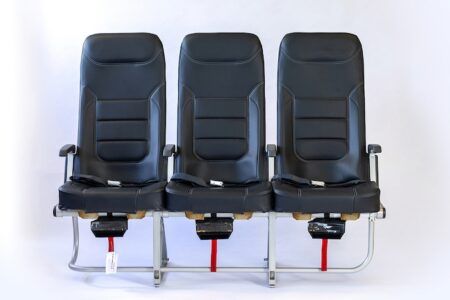A global group of automotive leather manufacturers and suppliers is claiming that using leather in cars is benefitting the planet. The group, named One 4 Leather, has released data outlining that if the automotive industry stopped using leather altogether, 35 million hides would go to landfill, meaning an extra 644 million kg of CO2e would be emitted annually. One organisation says that’s the same as driving an average internal combustion engine car 6.4 billion km or driving Route 66 over 1.6 million times.
There is an obvious parallel with aviation leathers, which are popular with airlines due to their durability and quality. The members of One 4 Leather may be familiar to many in the aviation sector, comprising Bridge of Weir Leather, Wollsdorf International, Bader, Dani., Heller-Leder; Howe Leather, International Leather Maker, Pangea, Pasubio Leather, Rino Mastrotto Group, Schauco Handelsgesellschaft, Stahl Holdings, and TFL Ledertechnik.
Leather is a by-product of the meat and dairy industry, as confirmed by the World Wildlife Federation (WWF), with no cattle bred purely for their hides. One 4 Leather reports that 331 million cattle are processed each year by the meat industry, creating over 2.18 billion cubic metres of hides. That’s equivalent to twice the volume of Mount Everest.
With global beef consumption rising, the leather industry is pivotal as it upcycles hides that would otherwise rot in landfill and emit billions of tonnes of CO2e each year.
One 4 Leather estimates that 40% of the 331 million hides (over 3.8 billion kg) go to landfill. That’s equivalent to 6,650 (fully laden) Airbus A380s. Of the remaining 60%, the automotive leather industry takes and processes 18%. If laid end-to-end, the hides the automotive industry saves from landfill could be wrapped around the earth 1.8 times.
As well as outlining the role the automotive leather industry plays in saving hides from landfill, One 4 Leather is calling for manufacturers to increase their use of the natural material.
The group commented, “The automotive industry can make a difference to the planet by using more leather in its cars, thus reducing the number of hides going to waste. If the demand for automotive leather increases by just 10%, it would save 3.5 million hides from landfill. That’s a saving of over 64 million kg of CO2e and enough leather for 1.1 million car interiors.”
“Car manufacturers are keen to promote greener options to leather in the form of PU and PVC materials. However, most leather alternatives contain more than 80% plastic. It’s the small amount of plant or vegetable (mushroom, pineapple, cactus) content that grabs the headlines,” claims the organisation. “These composite materials are difficult and currently very expensive to recycle, so they will inevitably end up in landfill.”
Facts, Figures and Averages Used:
No, of hides: 331,000,000
Hide weight: 28.9 kg
Hide size: 4.41m2
Hide thickness: 15mm UK & Ireland Beef Industry
Length of hideL 2.0m
Average hides used per car: 3
CO2e per tonne: 624 gg
Km per 1t CO2e: 9,994km





